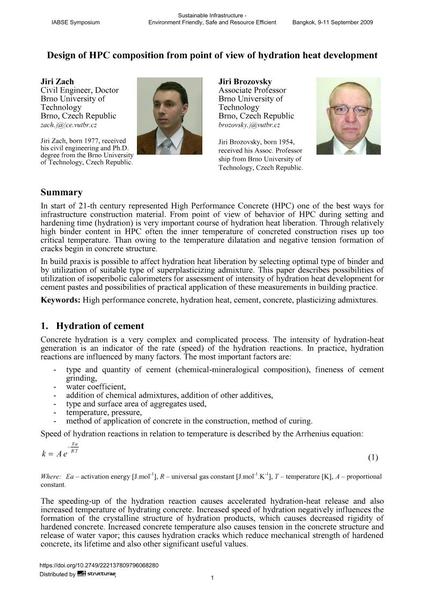Design of HPC composition from point of view of hydration heat development

|
|
|||||||||||
Détails bibliographiques
| Auteur(s): |
Jirí Zach
Jiri Brozovsky |
||||
|---|---|---|---|---|---|
| Médium: | papier de conférence | ||||
| Langue(s): | anglais | ||||
| Conférence: | IABSE Symposium: Sustainable Infrastructure - Environment Friendly, Safe and Resource Efficient, Bangkok, Thailand, 9-11 September 2009 | ||||
| Publié dans: | IABSE Symposium Bangkok 2009 | ||||
|
|||||
| Page(s): | 60-67 | ||||
| Nombre total de pages (du PDF): | 8 | ||||
| Année: | 2009 | ||||
| DOI: | 10.2749/222137809796068280 | ||||
| Abstrait: |
In start of 21-th century represented High Performance Concrete (HPC) one of the best ways for infrastructure construction material. From point of view of behavior of HPC during setting and hardening time (hydration) is very important course of hydration heat liberation. Through relatively high binder content in HPC often the inner temperature of concreted construction rises up too critical temperature. Than owing to the temperature dilatation and negative tension formation of cracks begin in concrete structure. In build praxis is possible to affect hydration heat liberation by selecting optimal type of binder and by utilization of suitable type of superplasticizing admixture. This paper describes possibilities of utilization of isoperibolic calorimeters for assessment of intensity of hydration heat development for cement pastes and possibilities of practical application of these measurements in building practice. |
||||
| Mots-clé: |
béton
|
||||
